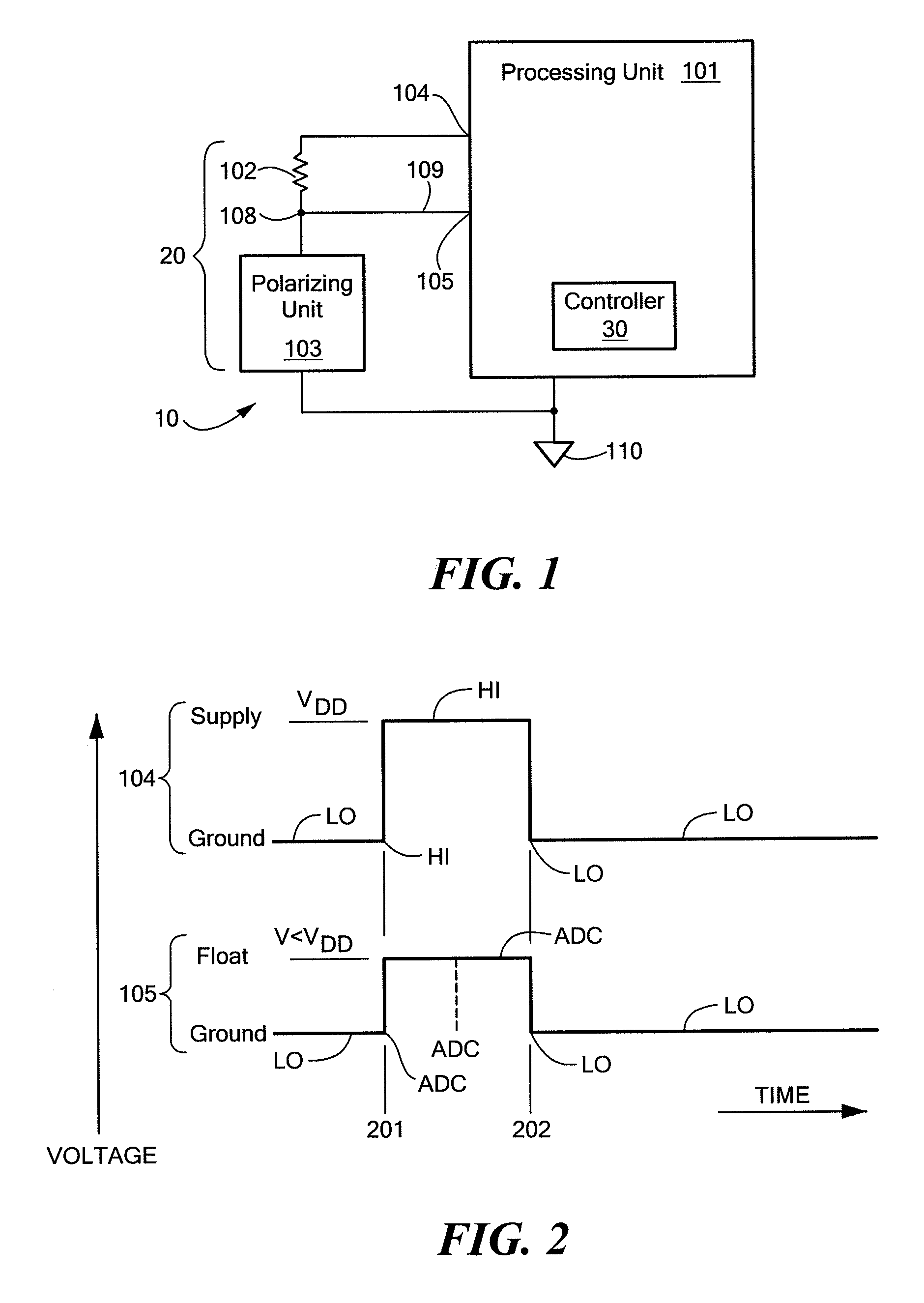Pulsed methods and systems for measuring the resistance of polarizing materials
a technology of polarizing materials and resistance, applied in the direction of resistance/reactance/impedence, instruments, measurement devices, etc., can solve the problems of residual polarization, inaccurate subsequent measurements, and relatively slow ac methods
- Summary
- Abstract
- Description
- Claims
- Application Information
AI Technical Summary
Benefits of technology
Problems solved by technology
Method used
Image
Examples
Embodiment Construction
[0012]Systems and methods for measuring the resistance of polarizing materials, such as for a relative humidity sensor, are disclosed. More specifically, systems and methods for measuring the resistance of polarizing materials using a voltage divider and pulsed excitation are disclosed.
[0013]Referring to FIG. 1, a system 10 for measuring the resistance of a polarizing material is shown. The system 10 includes a voltage divider circuit 20 and a processing unit 101.
[0014]The processing unit 101, such as a microprocessor, includes a voltage (power) source, a central processing unit (CPU), random access memory (RAM), read-only memory (ROM), and a controller 30. Voltage sources, CPUs, ROM, RAM, and controllers 30 for a processing unit 101, especially for a microprocessor, are all well-known in the art and will not be described in detail. The operation of the controller 30 and its interaction with the other elements of the system 10 will be described in greater detail below.
[0015]The volt...
PUM
 Login to View More
Login to View More Abstract
Description
Claims
Application Information
 Login to View More
Login to View More - R&D
- Intellectual Property
- Life Sciences
- Materials
- Tech Scout
- Unparalleled Data Quality
- Higher Quality Content
- 60% Fewer Hallucinations
Browse by: Latest US Patents, China's latest patents, Technical Efficacy Thesaurus, Application Domain, Technology Topic, Popular Technical Reports.
© 2025 PatSnap. All rights reserved.Legal|Privacy policy|Modern Slavery Act Transparency Statement|Sitemap|About US| Contact US: help@patsnap.com


